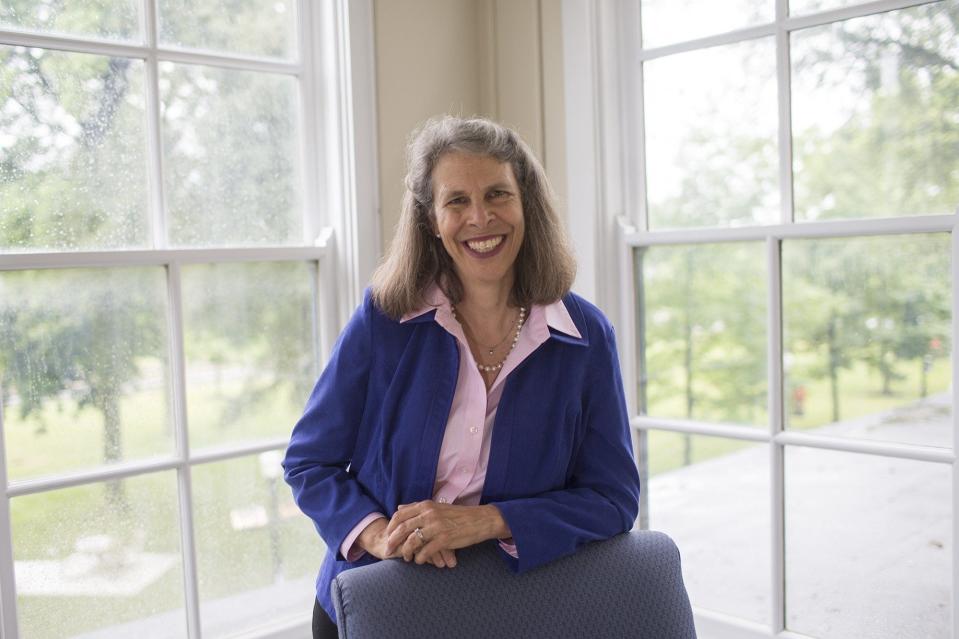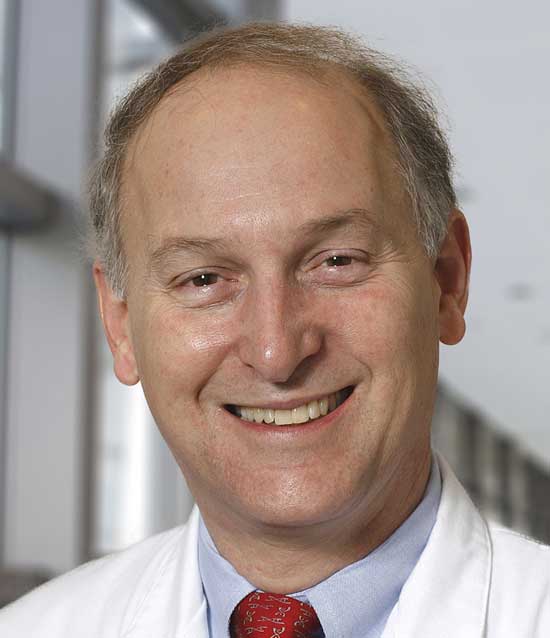Doctors on frontlines of HIV epidemic recall early days fighting the virus
In the more than 40 years since Ohio saw its first case of AIDS, Columbus doctors and nurses have been on the frontlines of the fight against the virus.
Some, such as Dr. Teresa Long and Dr. Michael Para, have dedicated their lives to fighting HIV and AIDS in Ohio. Others, such as nurse practitioner Keith DeLong, are working to get central Ohioans tested and treated.
Together, their work spans decades of the epidemic and has made Columbus an epicenter of both research and treatment for both HIV and AIDS.
If it weren't for Ohio's health care leaders, the U.S. may be much farther from its goal of ending the HIV and AIDS epidemic nationwide come its 50th anniversary in 2030.
These are their stories.
Dr. Teresa Long: Unknowns plagued early research, treatment
It was the early 1980s and Dr. Teresa Long was in her final year of medical school at the University of California San Francisco when she first learned about what would later become known as human immunodeficiency virus (HIV).
"It took us several years to figure out what it was, honestly," she said.
"It was such a scary time, but it was also a time for people to step forward, not only on the clinical side in terms of care, but also on the public health side in terms of guidance because there was a lot of unknown in the early '80s."

Long soon did her residency in preventive medicine at the California Department of Health Services, where she would go on to develop guidelines for addressing the AIDS epidemic from a public health perspective.
She eventually made her way to Columbus and joined Columbus Public Health in 1986. Today, she's a special adviser in Ohio State University's College of Public Health.
The initial reaction from her medical colleagues was split, with some providers refusing to be involved in treating HIV and AIDS patients, though mostly because of a lack of understanding about how the virus spread.
"Conversely, there were providers who stepped up and said, 'I'm going to do this,'" Long said.
An orthopedic surgeon, for example, fashioned her own chainmail-like gloves that she used during surgery, Long said. Almost unfathomable today — especially in the wake of the COVID-19 pandemic — it was the first time gloves of any kind became commonplace in emergency rooms, exam rooms and even dentist offices, she said.
The AIDS Coalition To Unleash Power, or ACT UP, was soon created and included many in the LGBTQ community. In an effort to bring attention to the growing crisis, the political action group shut down the New York Stock Exchange and the National Institutes of Health, as well as the San Francisco Department of Public Health and even the Golden Gate Bridge.
"As a young physician, it was interesting to watch," Long said. "They were interested in quality care provisions; they wanted providers to step up — only one hospital would provide care — and they wanted more involvement from the Public Health Department."
Meanwhile, providers and public health educators alike were trying to combat a multitude of misinformation about the little-understood virus.
"There were myths that were traveling the country in droves. It was part of the scare," Long said. "No, you could not get HIV from a toilet seat."
Dr. Michael Para: Many Ohioans didn't want to know they had HIV or AIDS
Dr. Michael Para first heard about a new disease a couple months before coming to Ohio State University, when a colleague at the Centers for Disease Control and Prevention called him for advice in May 1981.
"Can you think of any viruses that could damage the immune system?" recalled Para, an infectious disease specialist at Ohio State University's Wexner Medical Center and a lead researcher on AIDS treatments in clinical trials at the university.
Nothing so bad that you could develop pneumocystis pneumonia, Para recalls responding.

A month later, on June 6, 1981, the CDC described the first five patients with this syndrome in New York and California in its Morbidity and Mortality Weekly Report.
"Nobody knew anything about it; it was so unusual," Para said.
Not long after, Para, who hadn't seen any cases personally and had only read about them, was asked to present at a summer infectious disease conference.
"I gave the talk, and suddenly I was the regional expert," he said.
The fact that it affected gay men caught people's attention early on, Para said, with high-profile individuals from Liberace and actor Rock Hudson becoming very public faces of the mystery disease. World champion tennis star Arthur Ashe, who contracted the disease through a blood transfusion, would later die of AIDS-related pneumonia.
"At that time, the life expectancy was six months," Para said. "Literally, the lab was starting to ask, 'How do we handle this blood? How do we handle this patient? How much isolation do they need to be in?' I would carry the (patient's) breakfast tray into his room because (other providers) wouldn't carry the breakfast tray in."
By 1982, the CDC said it seemed like a bloodborne, sexually transmitted disease, similar to Hepatitis B, which became a gamechanger, Para said. It gave providers a better sense of how to protect themselves, by wearing gloves, for example.
But they didn't know for sure for another year or two, when the CDC finally confirmed it was a blood virus.
"Back then, most gay men were closeted … and so young people's parents didn't know they were gay … and all of a sudden, this virus comes along, and it was outing people," Para said. "It was terrifying; it really was, particularly for the gay community, watching their friends waste away and die."
Ohio didn't see its first case until 1981.
Several HIV cases stemmed from a single traveling salesman, Para said. And soon it became more than just the gay community that was affected.
With a large population of people with hemophilia, an inherited bleeding disorder that prevented clotting, many people from across the state were coming to Columbus for care, including blood transfusions. But at the time, there still was no way to test for the disease and therefore no way to know whether someone had it or not, Para said.
"Why would I want to know if I have this? You can't do anything about it," Para recalled patients telling him, causing him to rethink his approach. "What would I do if I had this? Would I want to know? It just made me a little more sensitive to the situation. … People were terrified."
A test was developed in 1985, but there still wasn't any treatment for HIV until a couple years later, when the National Institutes of Health started testing a new antiretroviral medication call azidothymidine, or AZT, as a potential treatment for people in the end stages of their lives. In 1987, Ohio got a grant to study the drug's effects on people who were still healthy.
"Even then, in '87, people were so... if they had HIV, they didn't want their friends to know they had it. They were ostracized," Para said. "Even when there were better treatments (in the 1990s), it was 16-20 pills that could cause nausea and make you tired. … The naïve perception that I had was that people would be beating down the door."
Keith DeLong: HIV and AIDS no longer a death sentence for newly infected patients
Between one-fourth and one-third of patients who see nurse practitioner Keith DeLong have HIV.
Some of them were diagnosed as far back as the 1980s, while others tested positive more recently, said DeLong, who works at Columbus-based Equitas Health.
The difference, DeLong said, is that people diagnosed today don't need to worry about the virus ending their life.
"Yes, this is going to change their health care (for) the rest of their life … (but) one pill once a day can keep this treated," DeLong said.
In fact, many patients can reach a point where they are "undetectable," which means the amount of the virus present in the body is so small, it cannot be transmitted through sexual contact, he said.
"Day to day, HIV management is very different than what it was even five to eight years ago," DeLong said. "We have more diversity in medication; we have stronger medications. We can do more with less."
Instead of having to take multiple medications a day, as in decades past, some patients can manage the virus with just one pill a day, he said. Newer, long-lasting injectables can be taken just twice a year.
"For some, that's a game changer," DeLong said. "In the next few years, that's going to get even better."
Meanwhile, a lack of education and access to care continue to be a huge barrier to providing treatment. Commonly held misperceptions that HIV only affects men who have sex with men have also been a barrier, DeLong said.
"People are very surprised and don't know how significant it is in all communities," he said. "It's not just the gay community; it's not just white males. A lot of our new infections are communities of color, and they're rising fast."
When DeLong talks to patients who recently tested positive, he tries to emphasize that an HIV diagnosis is not necessarily the end result of something they did. He tells them it isn't a reason to feel shame.
DeLong said he is hopeful those newly diagnosed patients may one day live to see a cure, a vaccine or both for HIV.
"There's nothing you did wrong; there's nothing wrong with you," he said. "You can't go around blaming yourself."
nshuda@dispatch.com
@NathanielShuda
This article originally appeared on The Columbus Dispatch: Decades later, Columbus health leaders still leading fight against HIV

